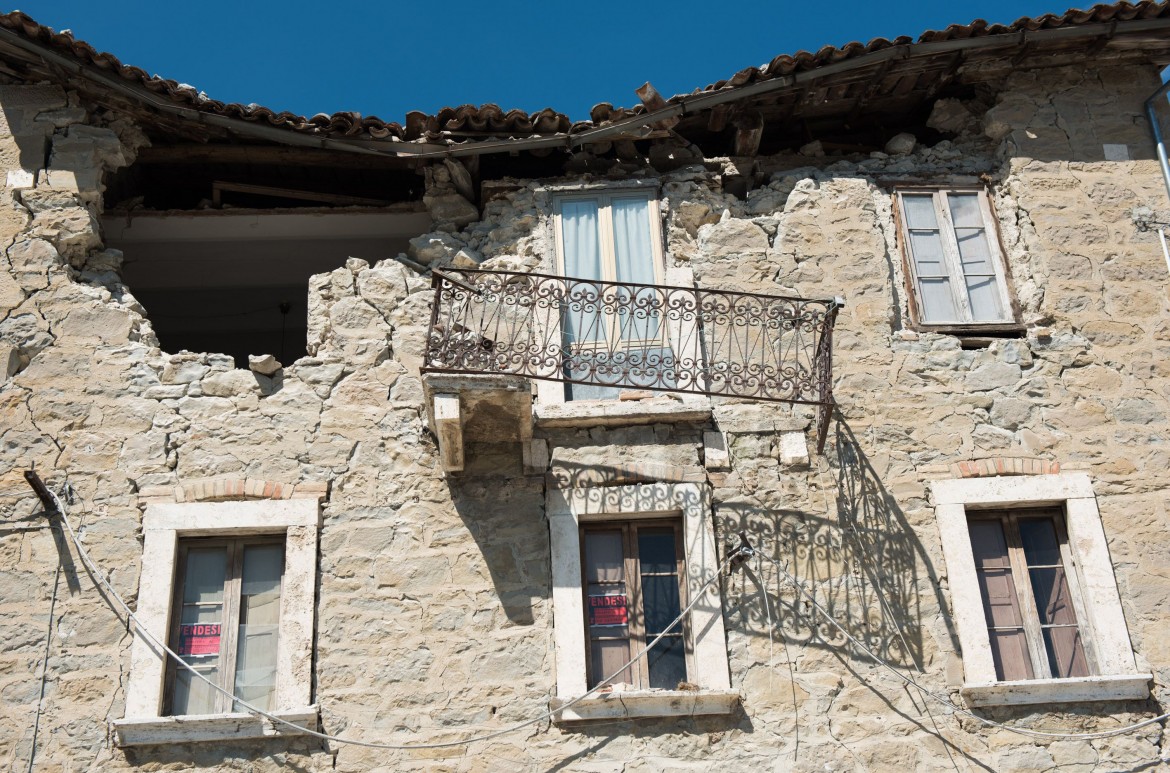Italy
With reconstruction improbable, farewell to Pescara del Tronto
Prime Minister Matteo Renzi’s promise to rebuild “as it was and where it was” won’t happen. A year after a devastating earthquake, an ancient town relocates.

Pescara del Tronto will never come back. The dot that represented it on the maps will be moved at least a few hundred meters: from the rocky cliff west of Arquata to the banks of the Tronto River, or perhaps even farther.
Forty-nine victims perished on the night of Aug. 24, 2016. The town became a mass of rubble in a few seconds. The stone borough is the first village officially erased by the earthquake.
The decision was communicated Thursday morning to Mayor Aleandro Petrucci and to the citizens of the NGO Pescara del Tronto 24-08-216 by Commissioner Vasco Errani and the National Research Council technicians: The hillside where the houses were perched is virtually nonexistent now and what has been suspected for months, is now officially a reality. The maps change and the famous reconstruction “as it was and where it was,” promised by former Prime Minister Matteo Renzi, will never happen, because Pescara is destined to be only the first case of a long list: When the seismic microlocations are completed, many other villages will only doomed for demolition and relocation to a safer area.
In this way the earthquake has redesigned the political geography of the Apennini mountains. All decisions on this matter will be taken in February, when the state of emergency period will end. Then the serious reconstruction debate will start and will cover 140 municipalities and related hamlets.
“We already knew that Pescara would not be rebuilt on the same location,” explains Mayor Petrucci. “Of course, we hoped until the last minute for something to change, but the technicians confirmed that it is not possible to rebuild where it was.”
Pescara was the second most damaged village after Amatrice: the tuff and sandstone houses were literally crushed by concrete reinforced roofs: out of the nearly 200 inhabitants, 49 did not survive the earthquake shocks. Many were buried in the rubble for hours before they could be taken out by the rescuers, while others managed to escape on time to see everything collapse around them. Now, passing near Pescara, nothing can be seen, only rubble: a country demolished on the night of the first earthquake and then pulverized by the October and January tremors. It is impossible to get it back to life, and the few dozen people who received the keys of temporary lodges last July can only see across the road that nothing was left and will never come back, as it was until a year ago.
The alternative plan is not ready yet, but it is assumed that the new houses will be built in the valley, along the Salaria road and nearby. “We have agreed with the technicians to meet again within a month to make the final decision,” concludes Petrucci, “I would like to hear the citizens first to understand what they want, but we still do not know what the CNR and Errani are thinking.” The Commissioner, however, will not participate in the debate, as his mandate expires on Sept. 9, and it is still unclear what the government is planning about the future of his office, whether it will still exist or whether its powers will be entrusted to the regional offices of Civil Protection.
So, Pescara del Tronto disappears: the technicians argue that the risk of landslides there is still very high and that it would be impossible to secure the rockbed. It is a difficult argument: Amatrice, Accumoli, Arquata and all the hamlets surrounding these three municipalities are laid down exactly above a seismic fault and this of course complicates everything.
It is also worth considering the debate on Pescara’s artistic and cultural heritage: the Santa Croce church, built in the fourth century AD, literally imploded during the earthquake, while the 13th century crucifix was miraculously unharmed behind the altar. It is also certain the cemetery will stay there: the damage caused by the earthquake was not devastating, and the new cemetery chapel was the first completed work inside the crater made by the earthquake.
Originally published at https://ilmanifesto.it/ricostruzione-impossibile-addio-pescara-del-tronto/ on 2017-09-01
